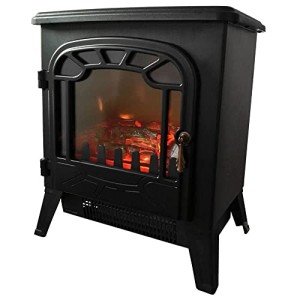The Charm and Functionality of Fireplaces: A Comprehensive Guide
Fireplaces have actually long been a central function in homes, representing heat, companionship, and comfort. They are available in various styles, materials, and fuel types, accommodating the choices and needs of varied house owners. This post explores the diverse world of fireplaces, exploring their history, types, installation considerations, and upkeep ideas, while providing FAQs to attend to common queries.
A Brief History of Fireplaces
Historically, fireplaces served as the foundation for cooking and heating homes. In ancient times, an open hearth was typically positioned in the center of a home. Over centuries, architectural improvements facilitated the development of more advanced styles, evolving from easy stone structures to elaborate mantels that administer over modern living areas.
Key Historical Milestones:
- Ancient Times: Open fires in caverns and primitive huts for heat and cooking.
- Middle Ages: Large, frequently centralized chimney structures in fantastic halls of castles.
- Renaissance: Decorative mantels and designs gain appeal, with the fireplace ending up being a symbol of wealth and status.
- Industrial Revolution: Advancements in products and manufacturing permit a broader series of fireplace styles.
- Modern Era: Gas and electric fireplaces end up being commonplace, permitting increased convenience and safety.
Types of Fireplaces
Today, various types of fireplaces are offered, each with its special attributes. Below is a breakdown of the most typical types:
| Fireplace Type | Description | Pros | Cons |
|---|---|---|---|
| Wood-Burning | Traditional fireplaces sustained by wood. | Genuine experience, heat output. | Labor-intensive, requires appropriate venting/maintenance. |
| Gas | Fireplaces that use gas or gas. | Easy to use and keep. | Less ambiance compared to wood. |
| Electric | Uses electrical energy to generate heat and flames. | Safe, no venting required. | Restricted heat output, higher energy expenses. |
| Bioethanol | Utilizes bioethanol fuel, producing clean flames. | Eco-friendly, portable. | Requires routine refueling. |
| Pellet | Utilizes compressed wood pellets as fuel. | Clean burning, sustainable. | Needs power for operation. |
Additional Considerations
When selecting a fireplace, it is vital to think about aspects such as:
- Fuel Availability: Consider what fuels are readily accessible in your location.
- Space and Aesthetics: The size of your living location and your design choices should guide your option.
- Building Regulations: Always consult local regulations to ensure compliance and security.
Installation Considerations
Installing a fireplace includes more than merely placing a structure in your home. Modern Fireplaces UK , professional input, and adherence to safety codes are vital. Here are some critical actions:
- Planning: Consider the size and kind of fireplace, where it will be put, and its desired use.
- Assessment: Hire a certified professional to evaluate your home and guarantee correct setup.
- Permits: Obtain any necessary building permits from local authorities.
- Products: Select appropriate products for the fireplace and surrounding location. Ensure they are fireproof and created for your fuel type.
Upkeep Tips for Fireplaces
Regular upkeep guarantees your fireplace runs securely and efficiently. Here are essential maintenance suggestions categorized by fireplace type:
Wood-Burning Fireplaces
- Chimney Cleaning: Have your chimney cleaned yearly to avoid creosote buildup.
- Inspect for Damage: Check for fractures and damage to the firebox and chimney structure.
- Firewood Storage: Store fire wood away from your house to avoid pest invasions.
Gas Fireplaces
- Log Inspection: Regularly examine ceramic logs for cracks and change if necessary.
- Vent Cleaning: Ensure that vents are free from obstructions.
- Pilot Burner Check: Test pilot lights and ignition systems routinely.
Electric Fireplaces
- Cord Inspection: Frequently check electrical cords for tearing or use.
- Tidy Surfaces: Wipe down surfaces routinely to get rid of dust and particles.
- Smoke Detectors: Ensure smoke alarm in the vicinity are practical.
Bioethanol and Pellet Fireplaces
- Fuel Storage: Store fuels in a cool, dry location far from direct sunlight.
- Routine Refueling: Monitor fuel levels and refuel as required.
- Ventilation: Ensure proper ventilation when using these fireplaces.
Frequently asked questions About Fireplaces
Q1: Do I need a permit to install a fireplace?
Yes, a lot of towns need licenses for fireplace installations to ensure safety and compliance with local building regulations.
Q2: How typically should I clean my chimney?
It is recommended to have your chimney cleaned a minimum of as soon as a year, particularly if you utilize your fireplace regularly.
Q3: Can I convert a wood-burning fireplace to gas?
Yes, many property owners convert wood-burning fireplaces to gas for convenience, but speaking with a professional is recommended to make sure an appropriate conversion.
Q4: Do electric fireplaces produce heat?
Yes, electric fireplaces can produce heat; nevertheless, their primary function is frequently for ambiance, making them a suitable option for those who desire a fire look without substantial heating.
Q5: Are bioethanol fireplaces safe?
Bioethanol fireplaces are usually safe when used correctly; however, they need appropriate ventilation, and users should follow all maker standards.
Fireplaces not only add aesthetic attract homes but likewise provide practical heating services. With numerous types, styles, and upkeep requirements, house owners can make informed options that best suit their requirements and lifestyles. Whether going with the appeal of a wood-burning fireplace or the convenience of a gas design, a fireplace can significantly enhance a living space's comfort and environment. As the hearth stays a centerpiece in homes, it continues to promote warmth, conversation, and connections among household and friends.

